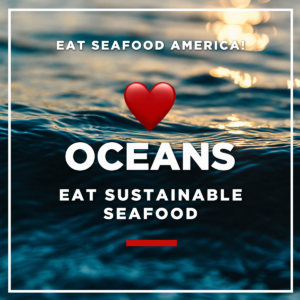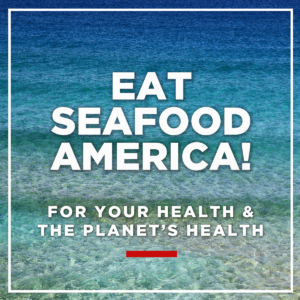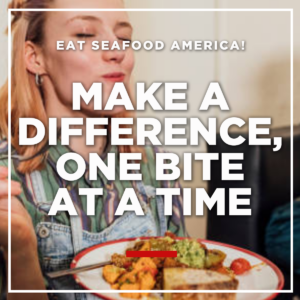SUMMARY
Seafood sustainability has made a lot of progress in the past 20 years. You can feel good and confident about enjoying delicious seafood. Grocery stores have sustainable seafood sourcing policies. Other tips for purchasing are to look for visible certifier logos like Aquaculture Stewardship Council, Best Aquaculture Practices, and Marine Stewardship Council; and seafood from the U.S. as the U.S. is a global leader in sustainability standards.
You can feel good about buying seafood.
If the saying “You are what you eat” is true, then eating sustainable seafood means you care about your health, the health of the planet, and enjoying truly good food.
 What is sustainable seafood?
What is sustainable seafood?
To have a sustainable supply of seafood for future generations means that seafood needs to be caught or farmed in environmentally and socially responsible methods. Part of that responsibility is a commitment to social justice and the ethical use of all resources.
Sustainability is a journey and there has been significant progress made with sustainable seafood over the past 20 years. Advances in technology have allowed for best practices in fisheries management, traceability, and improved feed, water quality, catch methods and more.
- Example: Many people still think they shouldn’t eat swordfish because of overfishing concerns from 20 years ago. The U.S. swordfish quota has been above sustainable levels since 2009. Time to enjoy swordfish steaks again!
 Enjoy seafood, it’s good for you and the planet, too.
Enjoy seafood, it’s good for you and the planet, too.
- Seafood has a lower carbon footprint than any other complete protein and is part of a climate friendly diet. What’s more, it’s nutritious and delicious. Support your planet, one bite at a time.
- The latest Dietary Guidelines for Americans has strengthened the recommendations for seafood consumption. It’s good for moms, good for babies’ developing brain, and good for our overall wellness.
- Fish and seafood are part of the climate-friendly diet and vital for our future food security.
Here’s how to buy sustainable seafood confidently.
- Grocers are doing the legwork for you: Your grocer has already done the hard work and has committed to sourcing sustainable seafood, so you can trust the fish and shellfish you buy is good for you and the planet, too. More than 90% of U.S. retailers have a sustainable seafood sourcing policy per the Conservation Alliance for Seafood Solutions, so it’s easier than ever to buy sustainable seafood.
- Look for certified: One way to know if you are buying responsibly farmed or caught products is to look for a visible certification logo or mark on packages or at the seafood counter. For wild seafood look for the Marine Stewardship Council (MSC) and for farmed seafood look for Aquaculture Stewardship Council (ASC) and Best Aquaculture Practices (BAP).

- Buy U.S. seafood: You can feel confident in seafood harvested in the U.S. The United States is a global leader in responsibly managed fisheries and sustainable seafood. It is the gold standard in fisheries management.
- Try something new: There are so many delicious seafood options to choose from and the variety is not just good for us, it really helps the ecosystem and biodiversity. The majority of what we eat in America is three species, but there are hundreds commercially available.
Farmed or wild?
Americans would be in better health if we ate more seafood. The only way to achieve that is through a combination of wild and farmed fish. We need both wild AND farmed seafood if we’re going to feed the growing global population.
In the U.S., some of our favorite and most popular seafood options are farmed, such as oysters, clams, mussels, shrimp, catfish, trout, salmon and black sea bass. Farming fish, shellfish and even seaweed helps produce food while restoring habitats, replenishing wild stocks, and rebuilding populations of threatened and endangered species.
 One bite at a time.
One bite at a time.
It is easy for each of us to help with climate change and protect the oceans. The small changes we make to what we put on our plates can have a big impact on our planet. Eating seafood matters for our health and our planet’s health.
Additional resources:


Leave a Reply